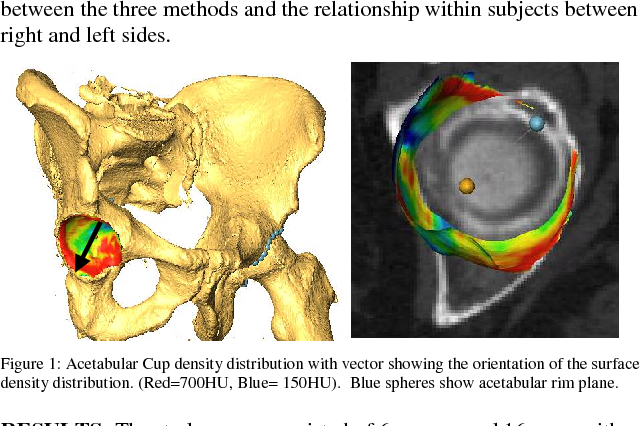Acetabular orientation: anatomical and functional measurement
Abstract | Purpose: Acetabular orientation is important to consider in hip joint pathology and treatment. This study aims to describe the functional orientation of the acetabulum as a representative measure of force transmitted through the hip joint generated from bone density mapping and compare it to landmark-based anatomical orientation measures.
Methods: CT scans of 38 non-pathologic individuals were analyzed. Functional orientation was computed as the density-weighted average of the acetabular surface normals based on surface density maps. Two anatomical measures were also used to describe the orientation of each acetabulum: the normal to the acetabular rim plane and the abduction angle based on AP pelvic "Radiographs" generated from the CT data.
Results: The average functional and anatomic abduction and anteversion angles ranged from 32°-58° and 22°-31°, respectively, with significant side-to-side correlation in individual patients for the majority of measures. Functional acetabular orientation was weakly correlated only with the rim plane measure. Native acetabular abduction in the 3D anatomic and functional methods was significantly shallower than the 2D "Radiographic" measure. The vector generated to describe functional acetabular orientation was found to be more vertically and posteriorly oriented than the anatomic measures.
Conclusions: Functional acetabular orientation, reflecting the calculated directionality of the subchondral bone density, yields a more posterior and vertical measure of acetabular orientation as compared to the direction of load transmission suggested by the anatomic methods.

